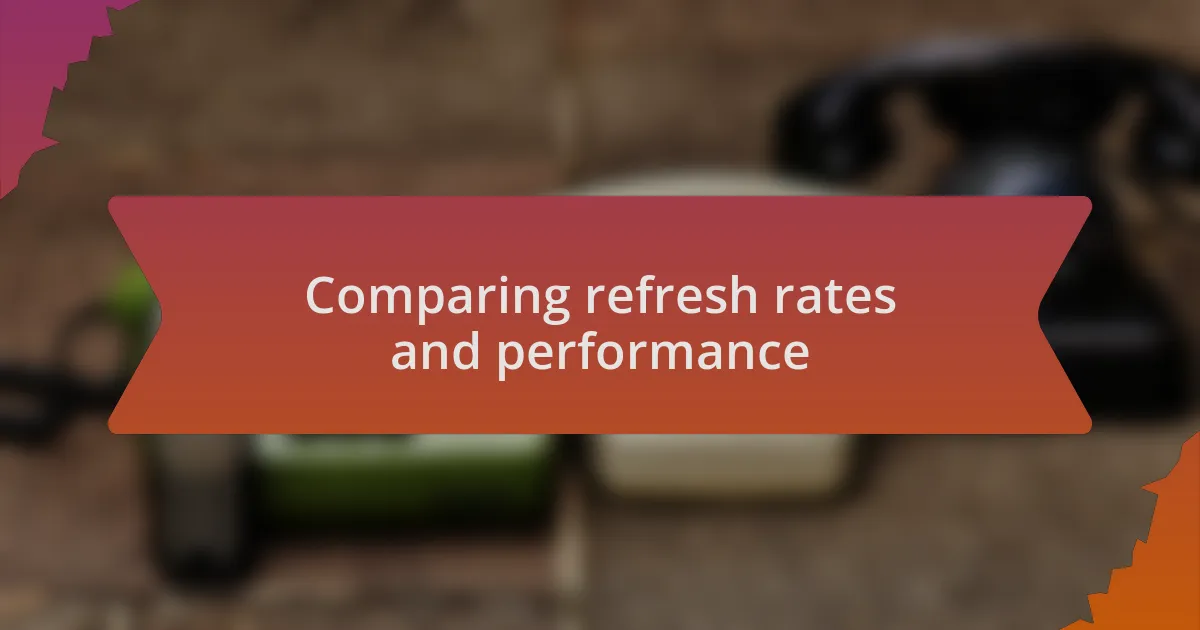Key takeaways:
- Higher refresh rates (60 Hz vs. 144 Hz) significantly enhance visual smoothness and responsiveness, especially in fast-paced gaming.
- Everyday tasks and creative work also benefit from higher refresh rates, improving overall user experience.
- For gamers, 144 Hz or more is recommended, while 60 Hz is sufficient for general tasks like streaming or office work.
- Understanding specific needs can help users choose the appropriate refresh rate for their monitor, balancing performance with requirements.

Comparing refresh rates and performance
When I first upgraded to a high-refresh-rate monitor, I was genuinely surprised by how much smoother everything felt, especially in fast-paced games. It’s fascinating to consider how a mere 60 Hz vs. 144 Hz can create such a stark contrast in performance. Have you ever found yourself caught up in the action, where every millisecond counts? That’s the difference between a casual experience and one that feels immersive.
The performance enhancements go beyond gaming, too. Everyday tasks—like scrolling through a web page or navigating desktop applications—suddenly become visually pleasing. I remember editing videos and realizing how fluid transitions felt, catching every frame with greater clarity. It makes me wonder if those who stick to standard refresh rates are really missing out on the nuances of visual engagement.
Ultimately, higher refresh rates can lead to a more responsive experience. Whenever I’ve played competitive games with higher refresh rates, I’ve noticed significant improvements in my reaction times. It raises a crucial question: if smoother visuals can enhance performance, why wouldn’t you consider making the switch? The tangible benefits I’ve found definitely make a compelling case.

Choosing the right refresh rate
Choosing the right refresh rate can be pivotal based on how you use your monitor. For gaming enthusiasts, I’ve found that opting for 144 Hz or more is essential if you want to tap into that ultra-responsive gaming experience. I still remember my first time running a high-speed racing game at 240 Hz—it felt like I was glued to the track, every turn precise and electrifying. Can you imagine how frustrating it would be trying to pull off those tight maneuvers on a sluggish display?
If you’re primarily using your monitor for tasks like streaming or general office work, a refresh rate of 60 Hz might be more than adequate. In my case, I’ve worked on projects that required color accuracy and detail rather than speed, and I felt comfortable with a standard display. However, I still cherished those moments when I would take breaks to watch action-packed movies, which highlighted the importance of having a monitor that could handle smoother visuals even in casual use.
For those in creative fields, consider how refresh rates might affect your workflow. I recall working on graphic design, and a sharper, higher refresh rate aided my precision when moving elements around the screen. Does that mean you need the highest refresh rate on the market? Not necessarily, but understanding your needs can help you find that sweet spot between performance and what you really require for your specific scenarios.